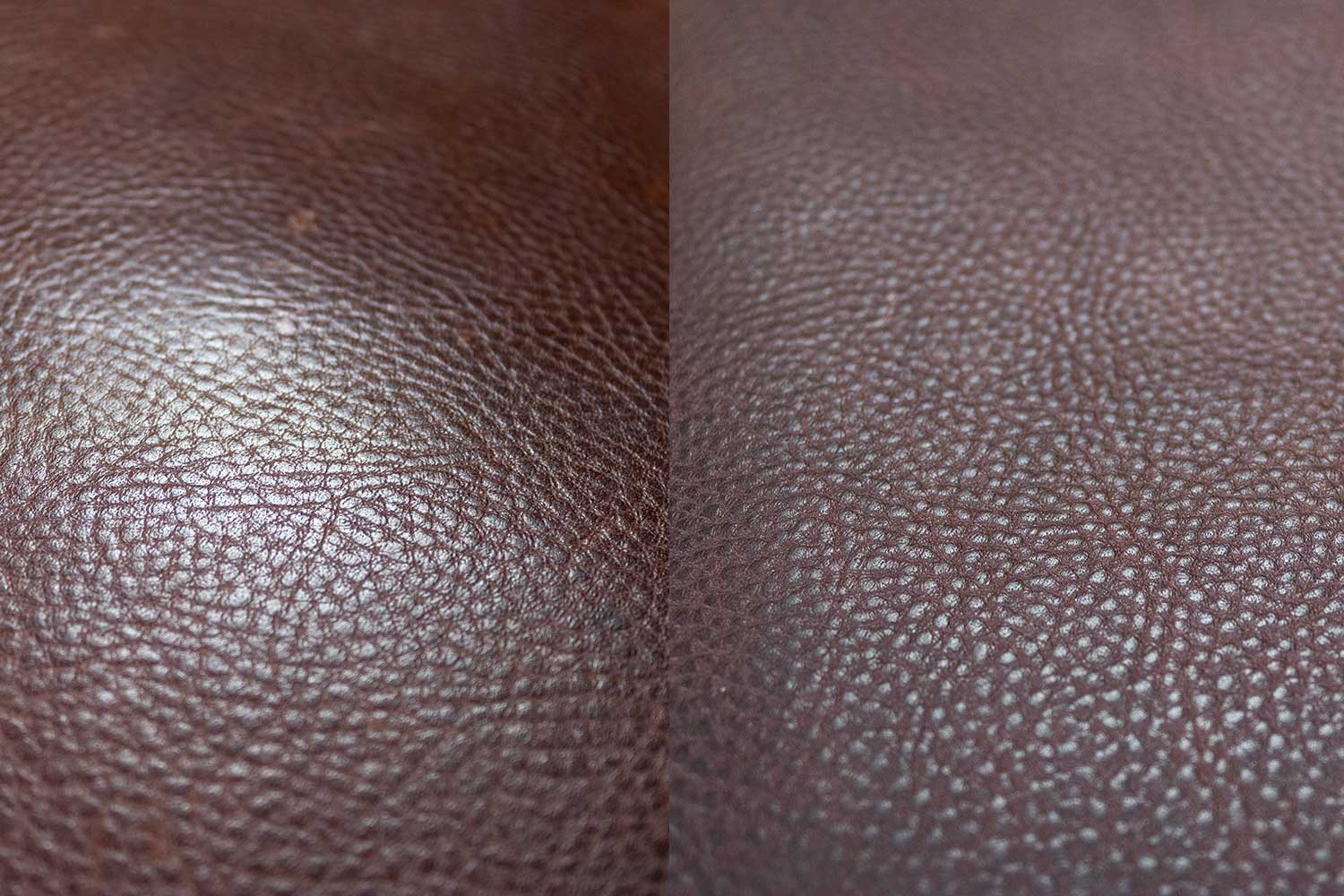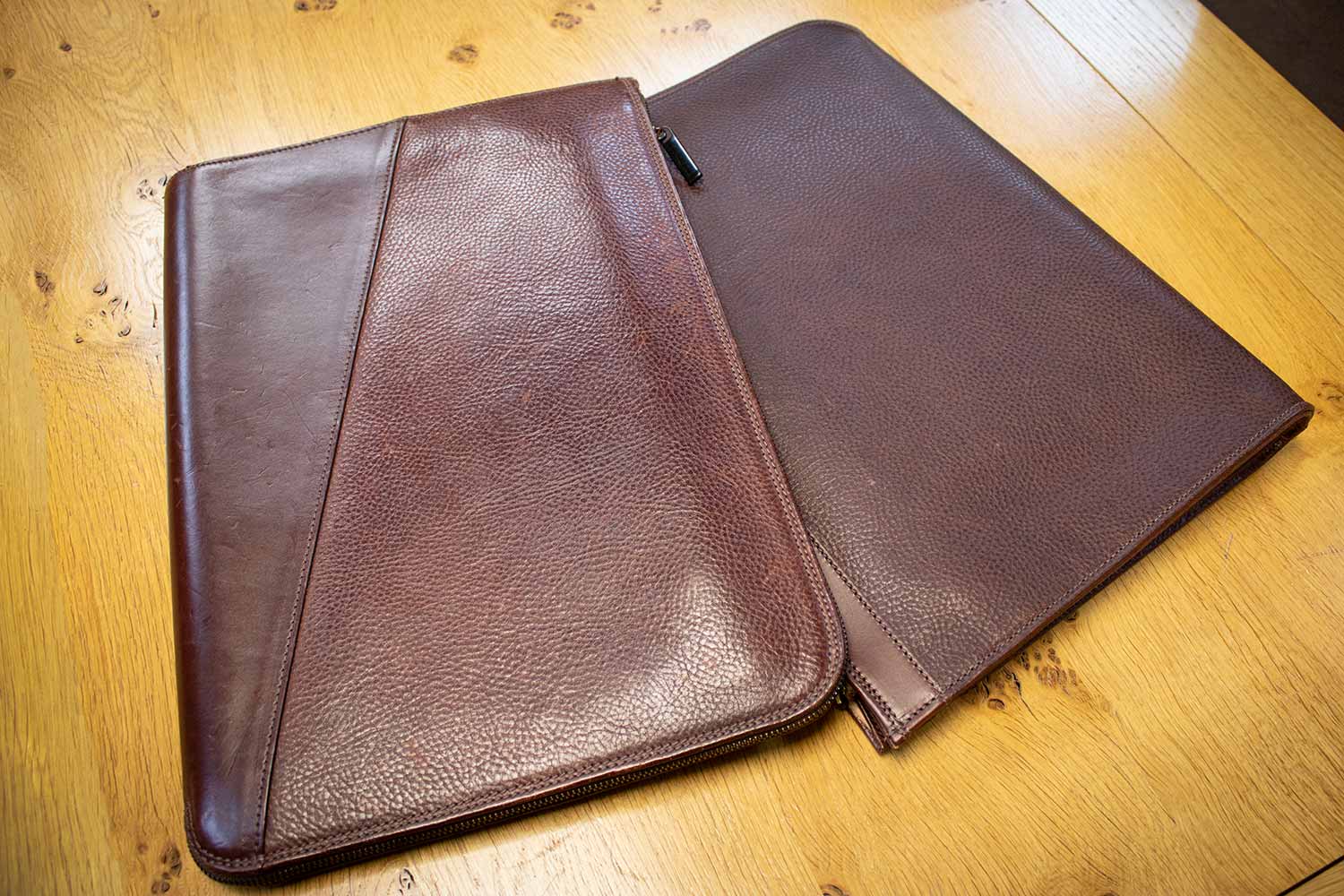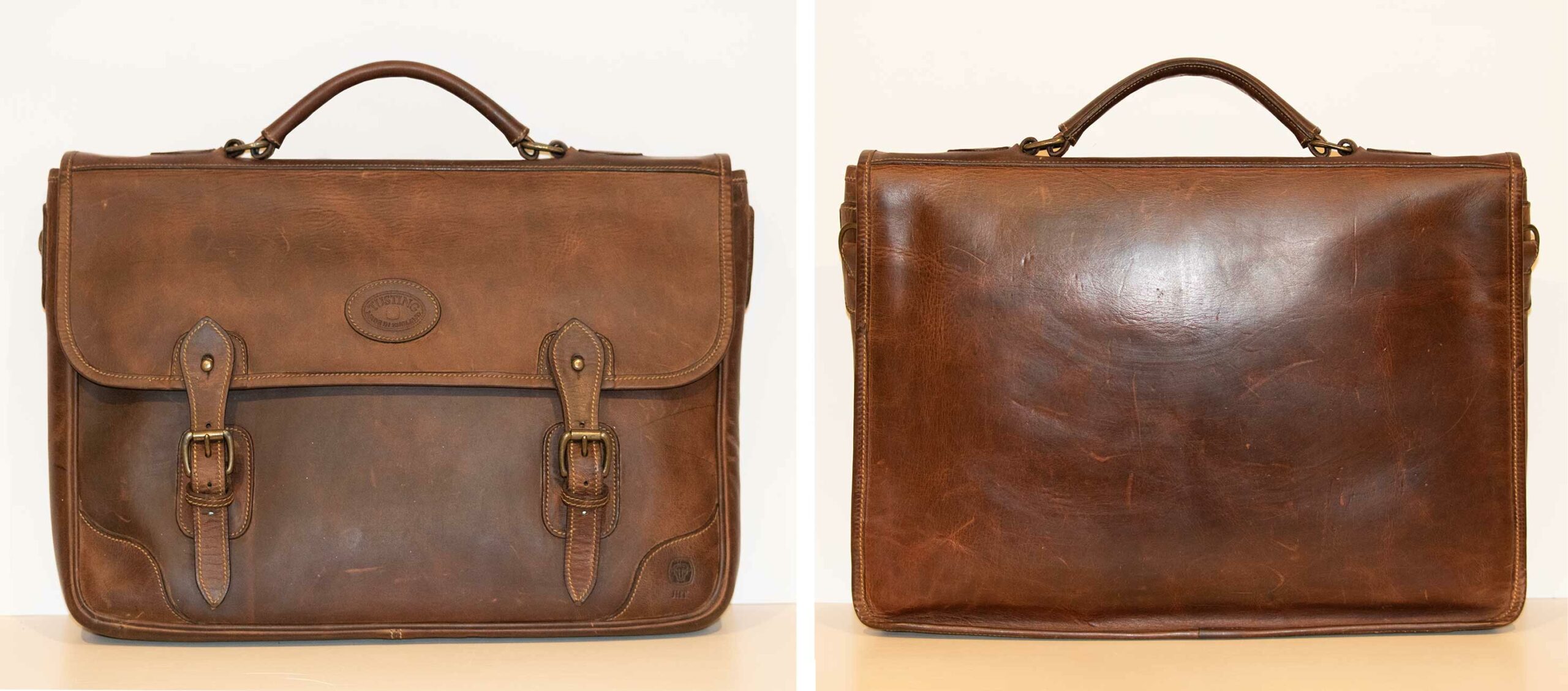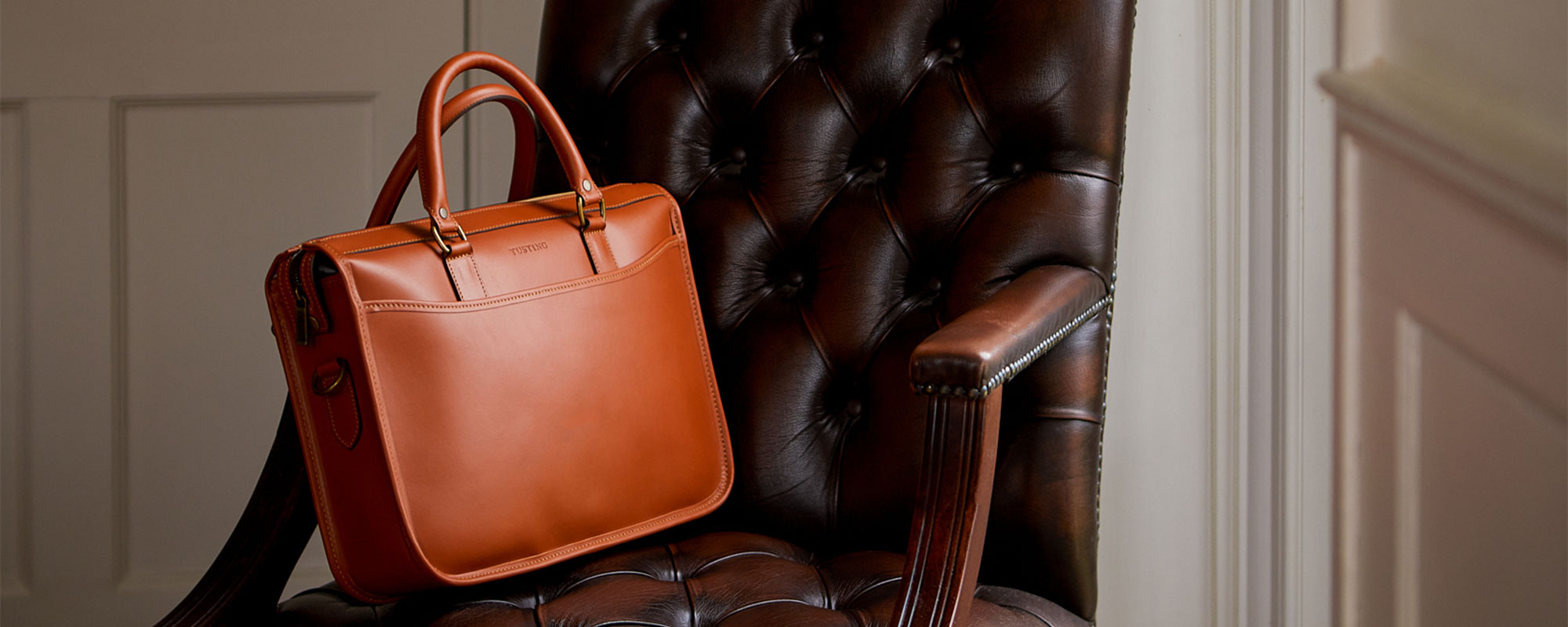Mini Masterclass: Patina

At its core, the formation of patina is a result of intricate chemical processes intertwined with the natural aging of leather. As leather fibres undergo exposure to environmental elements such as sunlight, moisture, oils, and friction, they take on subtle changes. The rearrangement of molecules within the leather fibres leads to the development of a glassy shell, imbuing the material with a rich and lustrous appearance.
The surface of the leather is flattened and polished by wear, as can be seen by close inspection of the grain of the leather – this image shows two pieces of the exact same leather – worn naturally to a patina on the left (this piece has not ever been waxed or manually polished, just regularly used), and, on the right, a new piece showing a bumpier, virgin grain.

A well-developed patina serves as a hallmark of quality, fullgrain leather. It signifies the passage of time and the unique experiences shared with the leather item. Patience is the key to its formation although encouraging it along is certainly possible – enhancing the natural aging process of leather with regular conditioning and energentic polishing can accelerate its development. Veg-tanned leather is the top choice when looking for a leather that will patina and is highly prized for this quality.
Show here are two Tusting iFolios – several years old on the left and a newly- made one on the right. Both are made from our Chestnut Elba, a fully veg-tanned, tumbled grain leather. The older case has developed a glossy shine and smoother surface simply through being regularly used.
There are, however, instances where patina may not manifest prominently, such as in leather products subjected to minimal use or those shielded from environmental exposure. Not all leathers even possess the propensity to develop a patina. Treated or coated leathers, such as corrected-grain or patent leather, lack the porous nature necessary for the absorption of waxes and oils, and, by the nature of their plasticised coating, the leather fibres are never exposed to the complex environmental influences that contribute to patina development.

Another beautiful example of years of natural physical wear causing a patina to form can be seen in this old briefcase from our archive. Made from our Aztec leather, which is heavily waxed during the tannage, it has absolutely no top dressing or polishing during production, resulting in a matt, slightly oily leather that is completely without any natural shine.
After years of daily use, this briefcase has been polished on its rear side only, where it swung and rubbed against its owner’s leg. The front of the bag, in contrast, remains matt, having never had the benefit of this daily abrasion or ‘polish’.
In essence, therefore, patina embodies the harmonious marriage of time, craftsmanship, and natural elements, elevating leather goods from mere commodities to individual items of beauty and character, each one unique from all others. As aficionados of leather craftsmanship, we cherish not only the endearing allure of a well-worn patina, but also the narrative it encapsulates for each owner.
Read more about our materials here.


